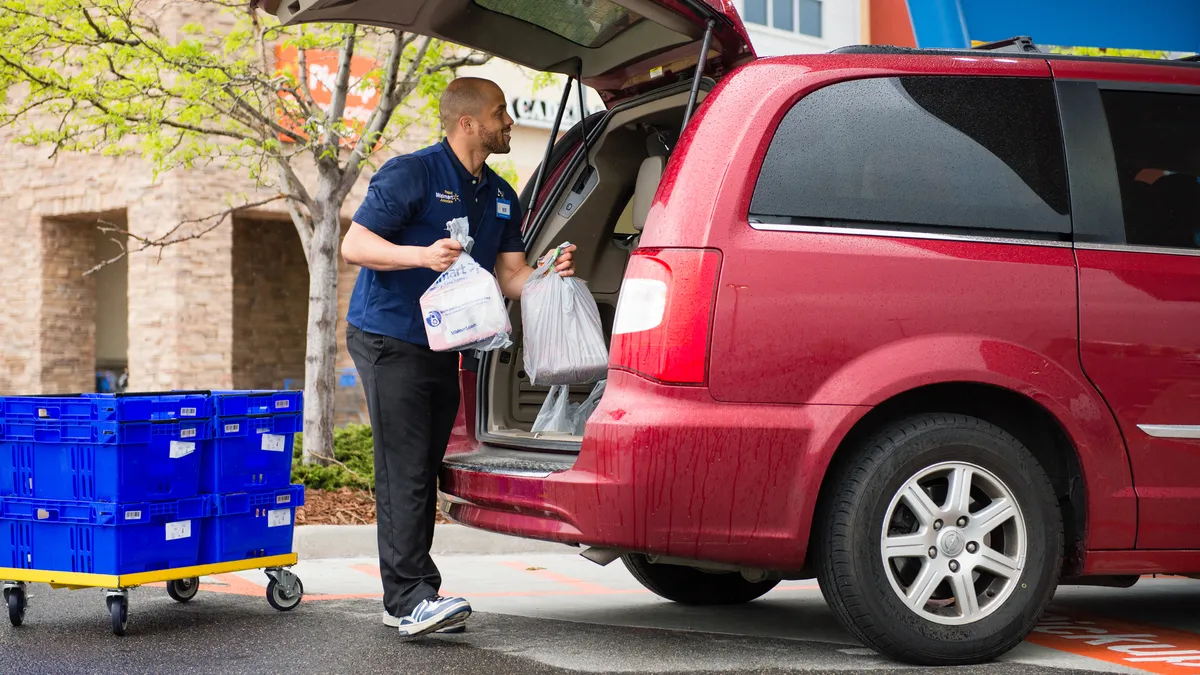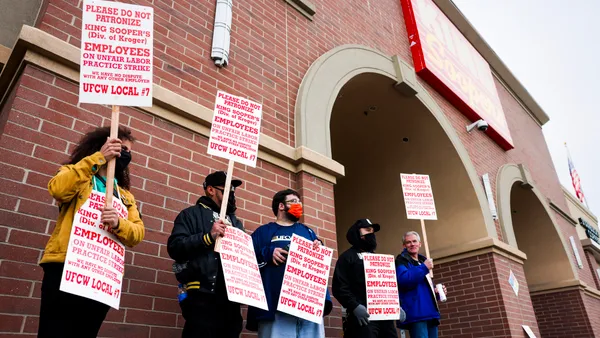Dive Brief:
- Online grocery spending continues to grow at a rapid pace, now making up 5.5% of total grocery spending in the U.S., according to a new study from advisory firm Brick Meets Click. Nearly 30% of U.S. households buy groceries online, and most of the near-term growth in online grocery spending will continue to come from this group of active online grocery shoppers.
- Over the past year, online grocery shoppers increased their weekly online spending from 28% to 46% of their total grocery spend, the firm found. Their average order size increased from $62 in 2017 to $69 in 2018.
- The report says that while grocers are well-positioned to meet the growing demands of online grocery shopping, Amazon, which has 77% household penetration, will continue to challenge other retailers when it comes to capturing online grocery spending – especially as it leverages iPrime membership benefits through Whole Foods.
Dive Insight:
While grocers may be poised to capture online dollars, many brick-and-mortar operators are still in the early stages of online offerings and are just beginning to roll out some of the features that make online grocery shopping worthwhile – delivery services in particular. Numerous chains began offering store pickup services in the wake of Amazon's acquisition of Whole Foods, and many have signed on with third-party delivery companies like Instacart and Shipt. Other retailers, like Save Mart in California, have just begun to dip their toes into online grocery services.
Given that online-only grocery entities, including Instacart and Amazon, were the initial source of disruption to traditional grocery shopping, it may take brick-and-mortar retailers a while to figure out the best approach to capture online grocery dollars and provide an experience that keeps shoppers coming back. The industry is also likely to see more mergers and acquisitions between traditional grocery stores and startups to expand and complement services.
As the original brick-and-mortar disruptor, Amazon’s massive household penetration combined with its ambition to overhaul the grocery industry through Whole Foods is going to continue to threaten other grocers. Cross-promotion between Prime and Whole Foods, like the Whole Foods discounts that were available on Amazon Prime Day, are nearly impossible for any other existing retailer to compete with.
But even Amazon is still refining its process. While two-hour grocery delivery is available through Whole Foods in a growing number of U.S. cities, the e-commerce giant has stumbled with its fresh grocery delivery service and offers what some experts believe to be a disjointed food retail strategy. And, since there are many cities without a Whole Foods, that leaves a lot of market share available to other grocers.
The online grocery industry could be a $100 billion business by 2025, so there is more than enough business to go around. Projections that as many as 70% of shoppers will buy groceries online should motivate grocers to invest in e-commerce that will create a seamless experience from shopping through delivery. Grocers will need to market to consumers eager to adopt grocery shopping, as well as loyal customers who may be willing to change their behavior for the right service offerings.












